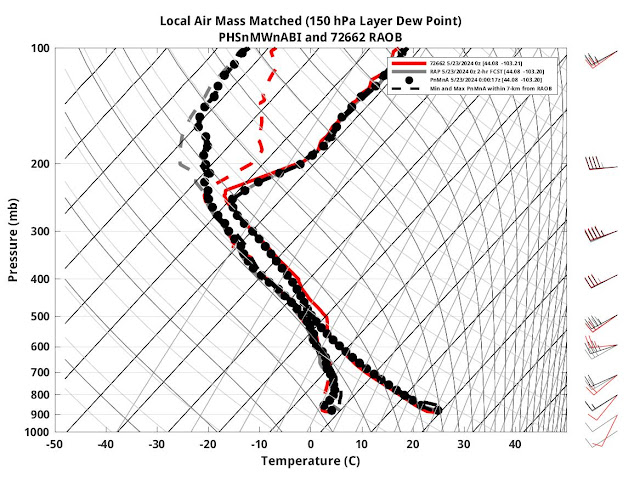The PHS WRF will offer a unique means to compare RAP analysis and instability parameters. When observing what conditions were like in the PHS, it was noticed that the inclusion of satellite data resulted in drier conditions being observed at the lower levels across western Nebraska.
As far as the temperatures went and how it affected instability, you can also observe the RAP analyzing a cooler pocket, and it likely seems to be the result of the coarse model struggling to capture the terrain across western Nebraska.
If you also look, the PHS also has a broader area of instability to the east compared to the RAP. This is where the PHS indicated higher moisture content, and it may be able to destabilize the region more efficiently as a result.
Kadic




















.png)











